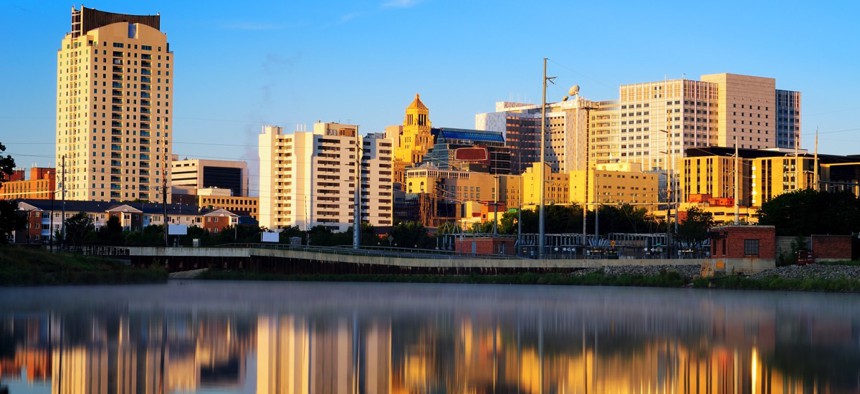Remaking Rochester, Minnesota in the Mayo Clinic’s Image

Rochester, Minnesota Shutterstock.com
In building a megahospital for the rich, can the city share the wealth?
Preparing for an unprecedented expansion of local medical facilities, officials in Rochester, Minnesota, this week ensured that women and minorities would be among the workforce completing forthcoming public infrastructure improvements.
The larger project, Destination Medical Center, represents the hometown Mayo Clinic’s $6.5 billion, 20-year plan to attract the business of wealthy and international medical patients—backed by a public-private partnership including state and county government.
In return for keeping Rochester competitive with U.S. medical hubs like Johns Hopkins Hospital in Baltimore and the Cleveland Clinic, as well as Asian megahospitals, this southeastern Minnesota city with roughly 111,000 residents expects as many as 47,200 new jobs and as much as $205 million in additional tax revenue.
Fast Company reports:
Because of changes to insurance structure and Medicare, the number of middle-class American patients from the Midwest getting treatment at Mayo is expected to go down over the next decade. Building the DMC, then, isn’t just about transforming a city: It’s also about securing a megahospital’s revenue stream in the face of huge industry changes.
In this country, the DMC project is a novelty—a Dubai-style grab at wholesale city engineering that hasn’t been seen stateside since the 1960s "urban renewal" wave. Blueprints are being made, politicians are cutting deals, and, if plans hold, a small city will double its population in just 20 years.
Luxury and mid-range hotels have already sprouted up near the planned DMC site and clinic’s secondary St. Mary’s campus, and foreign investors from the United Arab Emirates, Saudi Arabia, Hong Kong, and India are buying buildings and land.
When the DMC is built, city streets in Rochester will be winterized with heated sidewalks, tunnels and skywalks. In addition to new biotech and pharmaceutical tenants, cultural facilities, new housing, restaurants and shops will be erected.
There are also discussions to create a high-speed rail link with Minneapolis-St. Paul International Airport and the Twin Cities.
With more than $5.5 billion in investment from the private sector and $585 million from state and local government pledged—the plan has been criticized for building a utopia for the privileged on the backs of Rochester’s residents. The city’s sales tax was already raised in 2012, and proposed future increases have met resistance.
While public money will not go toward the Mayo Clinic’s new buildings or programs, it’s no wonder officials and clinic representatives are touting quality of life improvements when they can. In addition to more jobs and a bigger city, a portion of Rochester’s rising tax revenues will go to the local school district.
Six new neighborhoods covering 550 acres will complement the new megahospital many residents won’t be able to afford treatment at.
DMC recently touted a NerdWallet report naming Rochester the best mid-size city for women. The 2013 local unemployment rate for women was 3.7 percent—0.3 percent below male unemployment—and in no other midsize city was the percentage of women’s earnings spent on rent lower.
Rochester officials have now committed themselves to seeking infrastructure workforce employment of 4 percent minorities and 6 percent women and directing 4 percent of the cost of construction projects to targeted small and veteran-owned businesses, the Post Bulletin reported.
"We're just not going to be successful as a community if only those who were born with an entitlement are given the opportunity to succeed in this community,” Councilman Michael Wojcik told the newspaper after the vote. “It’s critically important to the future of everybody in Rochester.”
NEXT STORY: Connecticut Budget Plan Sparks Big Rebuke From Major Employers






